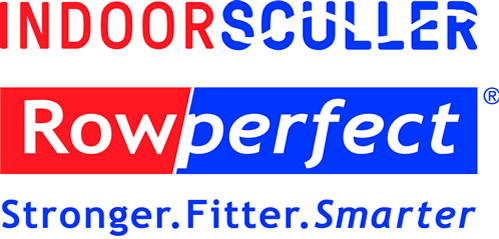Train better, train safer
For Rowers at all Levels & Rowing Coaches
Rowperfect
See how Rowperfect reduces injury risks
Fact 1

Tissue Adaptation Times
This graph shows tissue adaption times for various tissues. It was given to me when I was a young veterinary student – it explains why young horses break down when trained too hard, especially on harder surfaces.
For instance, you can see that 50% adaptation for muscle tissue can be achieved in 12 weeks, whereas for cartilage and tendons 75% adaptation takes up to two years.
I always found it fascinating that bones, muscles and ligaments adapted so quickly compared to tendons and cartilage – but when you understand that bones are constantly cycling the calcium they contain, and then remember that they need to heal quickly if they break, it makes good sense.
Fact 2
Repetitive shockload is really, really bad for cartilage and tendons…
Rowing on a fixed ergometer repetitively compresses cartilage in the joints (including of course the spinal disks) as well as jerking tendons due to the stop-start nature of the action; the delayed pickup at the catch and the shearing/compressing stop at the finish.
Consider the structure of cartilage:
- Cartilage is essentially structured like a sponge – large sugar/protein molecules holding lots of small water molecules by weak electric bonds are interspersed between fibrous strands of springy collagen. Squeeze cartilage repetitively and the water is squeezed out, resuting in loss of elasticity followed by tissue failure – initially micro-cracks in the cartilage followed in the worst cases by full thickness cracks. Sounds painful? It sure is.
- The spinal disks are formed by two types of fibro-cartilage (think joint cartilage but with fibrous tissue mixed in): the ANNULUS or ring round the outside of the disk, and the PULPOSUS or pulp – the soft goo inside the ring. Both are cartilage, and both shown clearly in scans as well as in theory to dehydrate significantly (10%!!) after rowing for thirty minutes on a stationary ergometer
So now you know why for many if not most athletes the weakest link is cartilage, because it adapts so slowly to higher load and is more prone to damage by the strain of repetitive high loads.
Rowing clearly uses the back muscles and the core/abdominal muscles a great deal and will always do so – it’s one of the reasons it’s such a great exercise. But doing it in a fixed environment, without the requirement for balance to enforce good posture and symmetrical loading, makes it far more likely to cause injury.
As a general training rule the following statement is good advice:
To prevent injuries the maximum allowable load to the weakest link should not be repetitively exceeded, and peak loads should be avoided.
the heavier the moving mainframe of the rowing machine the greater the forces acting at the catch and finish – and the less it simulates the wonderful rhythm of rowing in a racing boat.
The Indoor Sculler’s mainframe weighs just 17kg. So yes, it’s a little more expensive – but you’re getting something truly revolutionary and designed to last for many years.
Choose wisely, and perhaps have read some of the testimonials on our site; you’ll see how much others have enjoyed their machine.
Fact 3
Hamstring/Quad Balance – protecting the Anterior Cruciate Ligament (ACL)
Recent research has clearly shown that balancing hamstring and quad development is crucial for all of us, particularly in contact sports. Training techniques had over-emphasised quadriceps development at the expense of hamstring development. It makes perfect sense: the hamstrings and quads are designed to work as a team, so balancing their utilisation is clearly an important aspect of functional fitness.
On a fixed rowing machine, the hamstrings are almost ignored, and in fact they receive a nasty jerk at the end of the stroke .
On the Indoor Sculler it is clear that they work smoothly during the recovery, drawing the mainframe back to the rower just as they draw the boat in a rowing stroke.
The passage below quotes Dr Geoff Thompson
(Sports Physician for Australian Olympic & Paralympics teams).
The research clearly shows that it’s not just a matter of developing the muscle and nerve patterns – using the hamstrings properly has a specific role in protecting the ACL.
For trainers and coaches in contact sports we believe you can put real faith in the Indoor Sculler’s action to develop leg strength and symmetry at the same time as developing cardiac reserves or using it for rehabilitation.
Already the Head Trainer at an Australian Football League club has found success for rehabilitating an elite player (#1 ranked player in the club) using one-legged rowing on the Indoor Sculler. If you would like to know which club please contact us.
Thompson said there had been too much emphasis over the years on strong quadriceps muscles in the upper leg.
“People were forgetting about the hamstrings” he said. “The hamstring set of muscles do for the knee exactly what the cruciate does; holds the shin back against the femur and controls the rotation (of the knee), and that’s the role of the ACL.”
“So once they started balancing up hamstring strength with quad strength so the cruciate was more protected, that is helping to reduce the incidence as well as learning to land better”
The Weekend Australian, May 19-20 Sports Section
Head Office
2/4 Moore Road,
Freshwater NSW 2096
